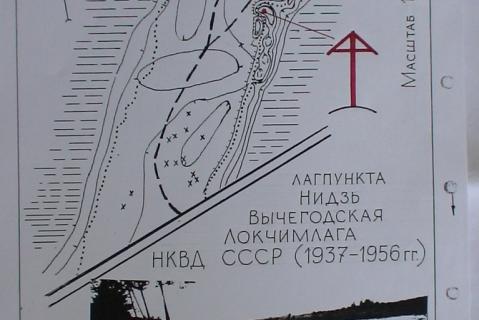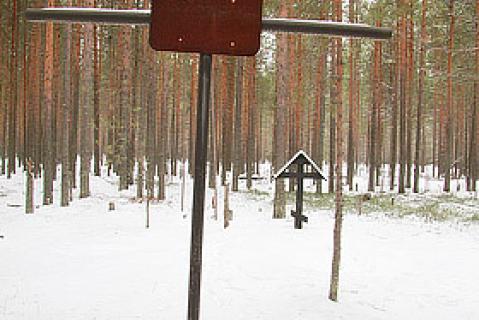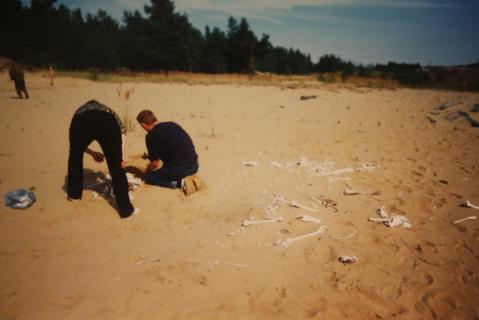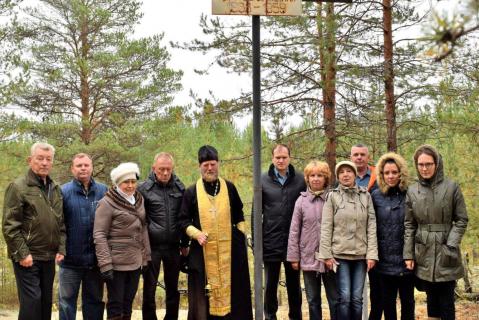From 1939, the camp outpost for disabled prisoners from Lokchimlag (subsequently Ustvymlag) was located in the Nidz camp settlement. After 1956 forced settlers were accommodated in the home for the disabled. The cemetery was in the pine forest and was abandoned after Nidz closed as a special settlement. In the 1970s and 1980s a sand quarry developed on the site of the cemetery and two thirds of the burials were destroyed.
Inhabitants of the surrounding villages gathered the remains of those buried as they came to the surface and on three occasions (1997, 2001, 2006) they reburied them in common graves on the edge of the former quarry. In 2006 a metal cross was erected with a board on which the following words were written: “Burials of the Ust-Lokchim camp. Nidz-Vychegodskaya. 1938-1959”.
The Memorial online database (2025) lists 129,473 victims in the Komi Republic. (See Nizhny Chov.)
Among them more than 64,000 deportees were sent to the Republic. The database also names almost 55,000 sent to the camps, where over 10,000 died: half were convicted in 1936-1940, including 7,977 who subsequently died in the camps.
Drawing on the Komi Book of Remembrance and other sources, the database lists 26 Lokchimlag inmates, one of whom was again imprisoned in 1937 and nine others who died in the camps between 1940 and 1943.
| Date | Nature of ceremonies | Organiser or responsible person | Participants | Frequency |
|---|---|---|---|---|
|
nk
|
solemn ceremonies
|
nk
|
members of the public, local inhabitants
|
Annual event
|
| State of burials | Area | Boundaries |
|---|---|---|
|
camp burials have not survived; reburials are intact
|
not determined
|
partially delineated
|
[ original texts and hyperlinks ]
Materials of the local history expedition of Kortkeross Centre for Children’s Extracurricular Education (2001, 2006) – Archive of the Pokayanie Foundation (Syktyvkar)
“Nidz camp settlement for disabled, prisoners’ cemetery”, Virtual Museum of the Gulag [retrieved, 26 May 2022; no longer accessible]




